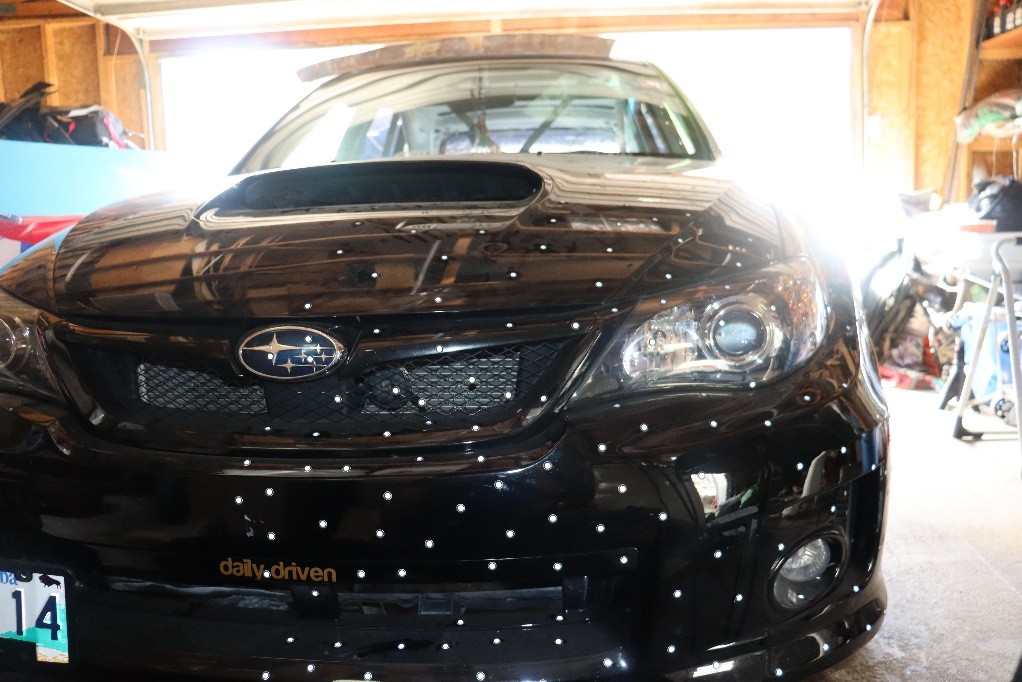Car customization and tuning are evolving, and cutting-edge technology is leading the charge. In the realm of automotive enhancement, precision and personalization are paramount. Imagine seamlessly integrating a printer, fax, scanner for car directly into your modification workflow – while this might sound unconventional, the spirit of innovation it represents is precisely what’s transforming the industry. One such innovation is the use of 3D scanning to create custom car parts, as brilliantly demonstrated by Edward Van Zyl of Dreamworks 3D Printing in Manitoba, Canada. Edward, a specialist in 3D printing and 3D scanning, undertook a project that highlights the power of reverse engineering in car design, creating a bespoke widebody kit for a client’s race car.
Crafting a Custom Widebody: The 3D Scanning Approach
The project began with a client’s desire to enhance his car with a widebody kit. “The client wanted to add a widebody kit to his car,” Edward explained. Instead of traditional, often laborious methods, the client envisioned a modern approach: 3D scanning and 3D printing. Dreamworks 3D Printing, equipped with the advanced EinScan HX 3D scanner, was perfectly positioned to take on this challenge.
The EinScan HX is renowned for its ability to capture intricate details of both large and small objects with exceptional accuracy. Its versatility extends to challenging surfaces, including black and reflective materials, making it an ideal tool for the automotive industry. This scanner excels in capturing high-resolution data with sub-millimeter accuracy, crucial for precise automotive modifications. Whether dealing with complex mechanical components or sleek car body panels, the EinScan HX delivers.
The initial step in this automotive transformation was 3D scanning the car’s fender. Despite the potentially reflective black surfaces, the EinScan HX handled the task with ease. “To get better data, we paste some markers on the surface of the car,” Edward noted, showcasing a practical technique to optimize scan quality. The scanner’s ability to smoothly capture data from these surfaces proved invaluable.
Expanding beyond the immediate need, Edward and his team decided to scan the entire car body. “We thought it would be an interesting idea to scan, so we also scanned the entire body to see if this scanner could accomplish such a challenge, even though our job actually only required data near the wheels.” This comprehensive approach not only tested the scanner’s capabilities but also provided a complete digital blueprint of the car. Simultaneously, Edward utilized the EinScan HX to scan the engine, further demonstrating the scanner’s broad applicability in automotive contexts. “The scan went very well overall, and the EinScan HX worked amazingly well to get data quickly, even for large or delicate objects,” Edward affirmed.
The scanned data was then imported into Fusion 360 and Blender, powerful software tools for design and modeling. Using the original bodywork as a foundation, Edward digitally sculpted the widebody kit, creating an outward extension that seamlessly integrates with the car’s existing lines. “As you can see, without the assistance of 3D scanning, we would have needed to model from scratch, which would have definitely slowed down the process,” Edward pointed out. 3D scanning eliminated the need for manual measurements and guesswork, significantly accelerating the design phase.
Designed Widebody Parts
With the digital design finalized, the next stage involved bringing the virtual to reality through 3D printing. The widebody parts were 3D printed and meticulously assembled. These 3D-printed components then served as molds. The car body shell was inverted, and fiberglass was used to create the final, robust widebody kit. Once attached and covering the tires, the widebody kit not only enhances the car’s aesthetics but also improves its aerodynamic performance, reducing turbulence and increasing downforce at high speeds.
Attaching 3D printed parts to the car body
The Future of Car Tuning with 3D Technology
“We will bring this car to the show and we hope to convey the capability of 3D scanning and 3D printing to everyone,” Edward concluded, highlighting the project’s role in showcasing the potential of these technologies. He believes this innovative process is set to become a cornerstone of race car tuning. Compared to traditional modification methods, 3D digital solutions offer a streamlined, efficient pathway for rapid data acquisition, intelligent design, and the creation of racing prototypes. This approach translates to substantial savings in assembly, labor, time, and material costs, marking a significant advancement in automotive customization. While a Printer Fax Scanner For Car in the literal sense might be a futuristic concept, the underlying desire for integrated, efficient technology in car modification is being realized through innovations like 3D scanning and printing.

